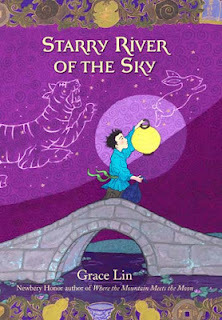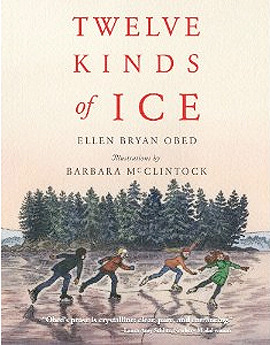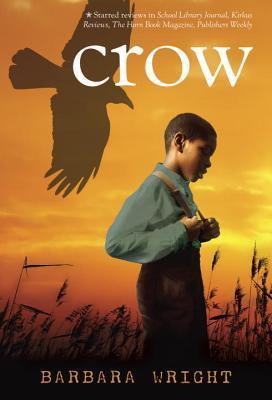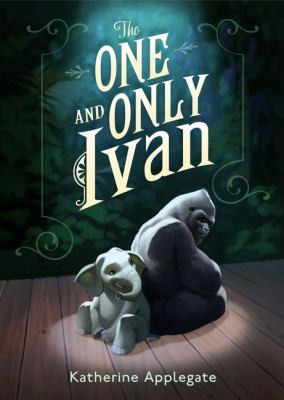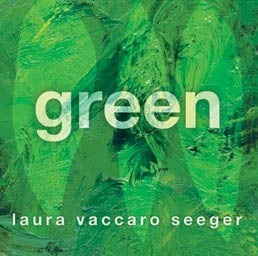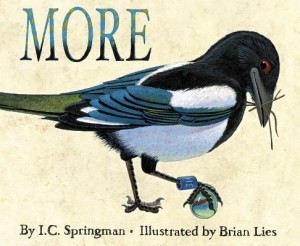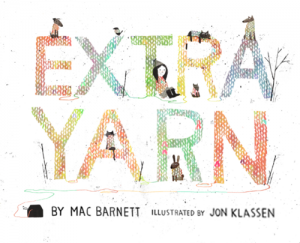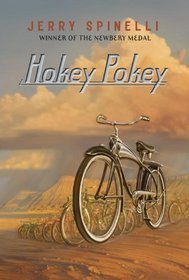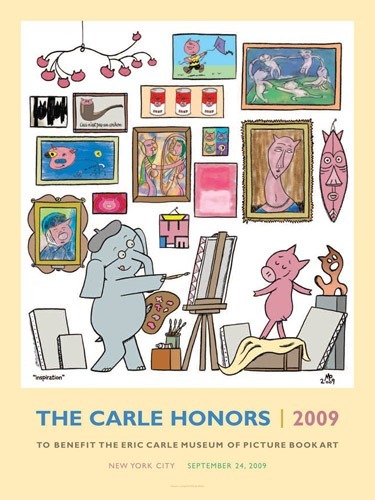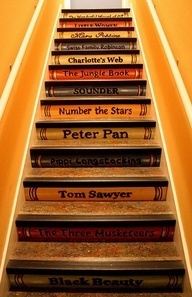Betsy Bird's Blog, page 320
January 21, 2013
Press Release Fun: 2013 Sydney Taylor Book Awards Announced
2013 Sydney Taylor Book Awards Announced by the Association of Jewish Libraries
The Sydney Taylor Book Award honors new books for children and teens that exemplify the highest literary standards while portraying the Jewish experience. The award memorializes Sydney Taylor, author of the classic All-of-a-Kind Family series.
The Sydney Taylor Book Award Winner for Younger Readers
Linda Glaser and Adam Gustavson will receive the 2013 gold medal in the Sydney Taylor Book Award’s Younger Readers category for Hannah’s Way, published by Kar-Ben, an imprint of Lerner Publishing. When Hannah’s family relocates to rural Minnesota after her father loses his job, she is the only Jewish student in her class. Hannah worries she will not be able to attend a Saturday class picnic when her teacher arranges a carpool. Her observant family does not ride in cars on the Sabbath. In a delightful display of acceptance and friendship, the entire class chooses to walk with Hannah so she can attend the picnic. Barbara Krasner, a member of the Sydney Taylor Book Award Committee, said: “The Minnesota setting, the Depression timeframe, and a Jewish girl’s dilemma all add up to a winning story.” In 2011, Glaser received a Sydney Taylor Honor for her book, Emma’s Poem: The Voice of the Statue of Liberty.
The Sydney Taylor Book Award Winner for Older Readers
The award in the Older Readers category will be presented to Louise Borden for His Name Was Raoul Wallenberg, published by Houghton Mifflin Books for Children. Written in verse, this biography of the Swedish humanitarian highlights his commitment to rescuing Jewish people in Budapest during World War II for readers aged eight to twelve. Teeming with photographs, Wallenberg’s passion for helping others is dramatically portrayed. Committee Chair, Aimee Lurie commented: “His Name Was Raoul Wallenberg shows how the courageous actions of one person, despite tremendous obstacles, can make a difference. Louise Borden’s well-researched biography will, without out a doubt, inspire children to perform acts of kindness and speak out against oppression.” In 2006, Borden’s The Journey that Saved Curious George: The True Wartime Escape of Margaret and H.A. Rey was a Sydney Taylor Honor Book for Younger Readers.
The Sydney Taylor Book Award Winner for Teen Readers
Deborah Heiligman will receive the 2013 gold medal in the Sydney Taylor Book Award’s Teen Readers category for Intentions, published by Knopf Books for Young Readers an imprint of Random House, Inc. The loss of innocence Rachel Greenberg, 16, experiences when the adults in her life — including her parents, friends, and rabbi — betray her trust and the relationship with her best friend crumbles is explored in this contemporary novel. Diane Rauchwerger, member of the Award Committee noted: “Rachel grows in her understanding and strength of character, while struggling with moral issues teens confront every day. Most importantly, she learns to forgive and to act with intention.”
Honor Books
Four Sydney Taylor Honor Books were named for 2013: The Elijah Door: A Passover Tale by Linda Leopold Strauss with illustrations by Alexi Natchev (Holiday House) and Zayde Comes To Live written by Sheri Sinykin and illustrated by Kristina Swarner (Peachtree Publishers) are recognized in the Younger Readers category.
The Wooden Sword by Ann Redisch Stampler with illustrations by Carol Liddiment (Albert Whitman & Company) garnered recognition as an Honor Book for Older Readers. For Teen Readers, the honor goes to Beyond Courage: The Untold Story of Jewish Resistance During the Holocaust by Doreen Rappaport (Candlewick).
In addition to the medal winners, the Award Committee designated thirteen Notable Books of Jewish Content for 2013. More information about the Sydney Taylor Book Award can be found at www.SydneyTaylorBookAward.org.
January 20, 2013
Review of the Day: The Boy Who Loved Math by Deborah Heiligman
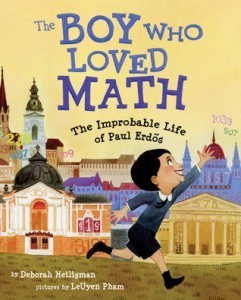 The Boy Who Loved Math: The Improbable Life of Paul Erdős
The Boy Who Loved Math: The Improbable Life of Paul Erdős
By Deborah Heiligman
Illustrated by LeUyen Pham
Roaring Brook (an imprint of Macmillan)
ISBN: 978-1-59643-307-6
Ages 6 and up
On shelves June 25th
Make a beeline for your local library’s children’s biography section and learn firsthand the shocking truth about picture book bios of mathematical geniuses. Apparently there was only one and his name was Einstein. End of story. The world as we know it is not overflowing with picture book encapsulations of the lives of Sir Isaac Newton or Archimedes (though admittedly you could probably drum up a Leonardo da Vinci book or two if you were keen to try). But when it comes to folks alive in the 20th century, Einstein is the beginning and the end of the story. You might be so foolish as to think there was a good reason for that fact. Maybe all the other mathematicians were dull. I mean, Einstein was a pretty interesting fella, what with his world-shattering theories and crazed mane. And true, the wild-haired physicist was fascinating in his own right, but if we’re talking out-and-out interesting people, few can compare with the patron saint of contemporary mathematics, Paul Erdős. Prior to reading this book I would have doubted a person could conceivably make an engaging biography chock full to overflowing with mathematical concepts. Now I can only stare in amazement at a story that could conceivably make a kid wonder about how neat everything from Euler’s map of Konigsburg to the Szekeres Snark is. This is one bio you do NOT want to miss. A stunner from start to finish.
For you see, there once was a boy who loved math. His name was Paul and he lived in Budapest, Hungary in 1913. As a child, Paul adored numbers, and theorems, and patterns, and tricky ideas like prime numbers. As he got older he grew to be the kind of guy who wanted to do math all the time! Paul was a great guy and a genius and folks loved having him over, but he was utterly incapable of taking care of himself. Fortunately, he didn’t have to. Folks would take care of Paul and in exchange he would bring mathematicians together. The result of these meetings was great strides in number theory, combinatorics, the probabilistic method, set theory, and more! Until the end of this days (when he died in a math meeting) Paul loved what he did and he loved the people he worked with. “Numbers and people were his best friends. Paul Erdős had no problem with that.”
There are two kinds of picture book biographies in this world. The first attempts to select just a single moment or personality quirk from a person’s life, letting it stand in as an example of the whole. Good examples of this kind of book might include Me…Jane by Patrick McDonnell about the childhood of Jane Goodall or Lincoln Tells a Joke: How Laughter Saved the President And the Country by Kathleen Krull. It’s hard to pinpoint the perfect way to convey any subject, but it can sometimes be even harder to tell an entire life in the span of a mere 40 pages or so. Still, that tends to be the second and more common kind of picture book biography out there. Generally speaking they don’t tend to be terribly interesting. Just a series of rote facts, incapable of making it clear to a kind why a person mattered aside from the standard “because I said so” defense. The Boy Who Loved Math is different because it really takes the nature of biography seriously. If the purpose of a bio is to make it clear that a person was important, how important was a guy who loved math puzzles? Well, consider what the story can do. In a scant number of pages author Deborah Heiligman gives us an entire life synthesized down to just a couple key moments, giving the man’s life form and function and purpose, all while remaining lighthearted and fun to read. Who does that?
Did you know that there are kids out there who like math? I mean, reeeeeeally like math? The kinds that beg their parents for math problems to solve? They exist (heck, Ms. Heiligman gave birth to one) and for those kids this book will come like a present from on high. Because not only does the author highlight a fellow who took his passion for numbers and turned it into a fulfilling and fun life, but thanks to illustrator LeUyen Pham the illustrations are overflowing with math equations and puzzles and problems, just waiting to be interpreted and dissected. I have followed the career of Ms. Pham for many years. There is no book that she touches that she does not improve with her unique style. Whether it’s zeroing in on a child’s neuroses in Alvin Ho or bringing lush life to a work of poetry as in A Stick Is an Excellent Thing, Pham’s art can run the gamut from perfect interstitial pen-and-inks to lush watercolor paints. I say that, but I have never, but ever, seen anything like what she’s done in The Boy Who Loved Math.
It would not be overstating the matter to call this book Pham’s masterpiece. The common story behind its creation is that there was some difficulty finding the perfect artist for it because whosoever put pen to paper here would have to be comfortable on some level with incorporating math into the art. Many is the artist who would shy away from that demand. Not Ms. Pham. She takes to the medium like a duck to water, seemingly effortlessly weaving equations, charts, diagrams, numbers, and theorems into pictures that also have to complement the story, feature the faces of real people, capture a sense of time (often through clothing) and place (often through architecture), and hardest of all, be fun to look at.
But that’s just for starters. The final product is MUCH more complex. I’m not entirely certain what the medium is at work here but if I had to guess I’d go with watercolors. Whatever it is, Pham’s design on each page layout is extraordinary. Sometimes she’ll do a full page, border to border, chock full of illustrations of a single moment. That might pair with a page of interstitial scenes, giving a feel to Paul’s life. Or consider the page where you see a group of diners at a restaurant, their worlds carefully separated into dotted squares (a hat tip to one of Paul’s puzzles) while Paul sits in his very own dotted pentagon. It’s these little touches that make it clear that Paul isn’t like other folks. All this culminates in Pham’s remarkable Erdős number graph, where she outdoes herself showing how Paul intersected with the great mathematicians of the day. Absolutely stunning.
Both Heiligman and Pham take a great deal of care to tell this tale as honestly as possible. The extensive “Note From the Author” and “Note From the Illustrator” sections in the back are an eye-opening glimpse into what it takes to present a person honestly to a child audience. In Pham’s notes she concedes when she had to illustrate without a guide at hand. For example, Paul’s babysitter (“the dreaded Faulein”) had to be conjured from scratch. She is the rare exception, however. Almost every face in this book is a real person, and it’s remarkable to look and see Pham’s page by page notes on who each one is.
Heiligman’s author’s note speaks less to what she included and more to what she had to leave out. She doesn’t mention the fact that Paul was addicted to amphetamines and honestly that sort of detail wouldn’t have served the story much at all. Similarly I had no problem with Paul’s father’s absence. Heiligman mentions in her note what the man went through and why his absences would make Paul’s mother the “central person in his life emotionally”. The book never denies his existence, it just focuses on Paul’s mother as a guiding force that was perhaps in some way responsible for the man’s more quirky qualities. The only part of the book that I would have changed wasn’t what Heiligman left out but what she put in. At one point the story is in the midst of telling some of Paul’s more peculiar acts as a guest (stabbing tomato juice cartons with knives, waking friends up at 4 a.m. to talk math, etc.). Then, out of the blue, we see a very brief mention of Paul getting caught by the police when he tried to look at a radio tower. That section is almost immediately forgotten when the text jumps back to Paul and his hosts, asking why they put up with his oddities. I can see why placing Paul in the midst of the Red Scare puts the tale into context, but I might argue that there’s no real reason to include it. Though the Note for the Author at the end mentions that because of this act he wasn’t allowed back in the States for a decade, it doesn’t have a real bearing on the thrust of the book. As they say in the biz, it comes right out.
I have mentioned that this book is a boon for the math-lovers of the world, but what about the kids who couldn’t care diddly over squat about mathy malarkey? Well, as far as I’m concerned the whole reason this book works is because it’s fun. A little bit silly too, come to that. Even if a kid couldn’t care less about prime numbers, there’s interest to be had in watching someone else get excited about them. We don’t read biographies of people exactly like ourselves all the time, because what would be the point of that? Part of the reason biographies even exist is to grant us glimpses into the lives of the folks we would otherwise never have the chance to meet. Your kid may never become a mathematician, but with the book they can at least hang out with one.
One problem teachers have when they teach math is that they cannot come up with a way to make it clear that for some people mathematics is a game. A wonderful game full of surprises and puzzles and queries. What The Boy Who Loved Math does so well is to not only show how much fun math can be on your own, it makes it clear that the contribution Paul Erdős gave to the world above and beyond his own genius was that he encouraged people to work together to solve their problems. Heiligman’s biography isn’t simply the rote facts about a man’s life. It places that life in context, gives meaning to what he did, and makes it clear that above and beyond his eccentricities (which admittedly make for wonderful picture book bio fare) this was a guy who made the world a better place through mathematics. What’s more, he lived his life exactly the way he wanted to. How many of us can say as much? So applause for Heiligman and Pham for not only presenting a little known life for all the world to see, but for giving that life such a magnificent package as this book. A must purchase.
On shelves June 25th
Source: Advanced readers galley sent from publisher for review.
Like This? Then Try:
On a Beam of Light: The Story of Albert Einstein by Jennifer Berne, illustrated by Vladimir Radunsky
Play, Mozart, Play by Peter Sis
Me . . . Jane by Patrick McDonnell
Odd Boy Out: Young Albert Einstein by Don Brown
Read what Ms. Heiligman had to say about the book on a recent NYPL panel Ethics in Nonfiction for Kids.
Today is Nonfiction Monday! Head on over to The LibrariYAn for the round-up.
January 17, 2013
Press Release Fun: Kidlit Drink Night (SCBWI Edition)
Because what is not to love about talking books for kids in bars?
Happy New Year, Everyone!
We hope your 2013 is off to a great start and we’re looking forward to another year of outstanding books, conversations, and drinks!
As you may know, the SCBWI (Society for Children’s Book Writers and Illustrators) New York Conference is right around the corner. So another KidLit Drink Night must be, too!
Details for KLDN:SCBWI Edition:
When: Friday, Feb 1st, starting at 8:30 pm (or as soon as folks wander over after the SCBWI Cocktail Party)
Where: The Wheeltapper Pub, 141 East 44th Street (near Lexington Avenue). Specifically, the backroom.
Who: You. And your friends. And your friends’ friends. And anyone you know who wants to talk KidLit.
As always, no need to RSVP, but feel free to drop a line if you have any questions.See you then!
Heather & Mackenzie
Team KidLit Drink Night 2.0
PS: If you plan to tweet about the event (and we’d love it if you do!) #KLDN is the preferred hashtag.

January 16, 2013
Fusenews: Dark fiddlers and ponymen
 Looks like the National Book Awards are taking a page out of the Oscars’ handbook. Which is to say, if people like nominees for awards so much, why not give them MORE nominees? Says PW, “In an effort to broaden the reach and impact of the National Book Awards, the National Book Foundation will select a longlist of 10 titles in each of its four categories (fiction, nonfiction, poetry, and young people’s literature), beginning in 2013. The longlist (10 titles per category) will be announced five weeks before the finalists (five titles per category) announcement: in 2013, the longlist will be announced on September 12, the finalists on October 15, and the winners on November 20.” Ten! That’s incredibly fun. I’m sure there will hemming as well as a bit of hawing over this change, but I for one will find it mighty fascinating. In fact I was so fascinating by the start of the article that I nearly missed the end that read, “In addition, judges comprising the four panels—fiction, nonfiction, poetry, and young people’s literature—will no longer be limited to writers, but now may also include other experts in the field including literary critics, librarians, and booksellers.” You don’t say . . . veeeeeeeery interesting. Doesn’t that change the whole tone of the awards, though? Hm.
Looks like the National Book Awards are taking a page out of the Oscars’ handbook. Which is to say, if people like nominees for awards so much, why not give them MORE nominees? Says PW, “In an effort to broaden the reach and impact of the National Book Awards, the National Book Foundation will select a longlist of 10 titles in each of its four categories (fiction, nonfiction, poetry, and young people’s literature), beginning in 2013. The longlist (10 titles per category) will be announced five weeks before the finalists (five titles per category) announcement: in 2013, the longlist will be announced on September 12, the finalists on October 15, and the winners on November 20.” Ten! That’s incredibly fun. I’m sure there will hemming as well as a bit of hawing over this change, but I for one will find it mighty fascinating. In fact I was so fascinating by the start of the article that I nearly missed the end that read, “In addition, judges comprising the four panels—fiction, nonfiction, poetry, and young people’s literature—will no longer be limited to writers, but now may also include other experts in the field including literary critics, librarians, and booksellers.” You don’t say . . . veeeeeeeery interesting. Doesn’t that change the whole tone of the awards, though? Hm.Speaking of awards, they’ve announced the 2013 Edgar nominees for best mystery fiction. Gotta say I like these contenders, though where the heck is The Case of the Deadly Desperados by Caroline Lawrence?!?
BEST JUVENILE FICTION
Fake Mustache: Or, How Jodie O’Rodeo and Her Wonder Horse (and Some Nerdy Kid) Saved the U.S. Presidential Election from a Mad Genius Criminal Mastermind. Tom Angleberger. Abrams/Amulet Books.
13 Hangmen. Art Corriveau. Abrams/Amulet Books.
The Quick Fix. Jack D. Ferraiolo. Abrams/Amulet Books.
Spy School. Stuart Gibbs. Simon & Schuster Books for Young Readers.
Three Times Lucky. Sheila Turnage. Penguin/Dial Books for Young Readers.
In the Me Stuff files, Reads for Keeps asked some other folks and me to list our children’s literary pet peeves. Everyone said something different, making for an interesting little piece. I was particularly taken with this one from Farida Dowler: “Characters help in epic ways, then have their memories erased by the adult magician once the epic is complete. The Dark is Rising series, I’m looking at you.” Oooooh, yeah. I remember how much that drove me crazy as a kid. Hounds of the Morrigan you are ALSO on notice.
Jarrett Krosoczka trips into dangerous territory when he predicts ten great children’s books that will become classics. You may agree with some and disagree with others, but at the very least it’s a great glimpse into what books work best with his family.
There are two obituaries this week that caught my eye. The first was that of Caldecott Medal winner Gerald McDermott, remembered in PW here. That’s fine and all, but it’s Doug Cushman’s remembrance of his old friend that should be considered as the true tribute to McDermott. May you all have friends that put your life and loves into such glorious context as Doug has done here. The other loss was that of Aaron Frisch. At the deplorably young age of 37, Aaron was responsible for one of my favorite picture book biographies of all time. Dark Fiddler: The Life and Legend of Nicolo Paganini is one of the strangest, moodiest, and best encapsulations of a man I’ve encountered. I reviewed the book back in 2008 and it has stayed with me ever since. I never met Aaron personally but I am very sorry to hear that he has left us. He gave the world some great books.
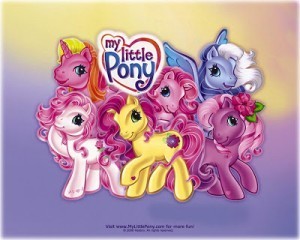 You may be familiar with the term “Googleganger”. It tends to be someone online who has your name, exact spelling and all, and comes up in searches when folks are looking for you. I have one who is a southern artist of some sort, and that’s all fine. We don’t really intersect. I can only imagine the hell my life would be if I had someone like, oh I dunno, a writer for the new My Little Pony animated series. Because honey, you do NOT want to get wrapped up involuntarily into the Brony community. Yet that very fate has taken one of our own: Author/Illustrator Meghan McCarthy. She writes about it with great good humor here. Godspeed, Meghan.
You may be familiar with the term “Googleganger”. It tends to be someone online who has your name, exact spelling and all, and comes up in searches when folks are looking for you. I have one who is a southern artist of some sort, and that’s all fine. We don’t really intersect. I can only imagine the hell my life would be if I had someone like, oh I dunno, a writer for the new My Little Pony animated series. Because honey, you do NOT want to get wrapped up involuntarily into the Brony community. Yet that very fate has taken one of our own: Author/Illustrator Meghan McCarthy. She writes about it with great good humor here. Godspeed, Meghan.
In other news, our old friend James Kennedy wrote a review in the Wall Street Journal of Leonard Marcus’s recent book Listening for Madeline, the 51 edited interviews with friends and colleagues of the great writer Madeleine L’Engle. Really good stuff. I have the book sitting on my shelf but haven’t read it cover to cover yet. This review makes me want to do so and stat.
Oh! And Battle of the (Kids’) Books has turned on the engines and is slowly thrumming to life. Look for that to rev up mighty soon.
I consider myself fairly tame these days. Gone are the days when I could whip up a surefire debate with a single blog post. I think I’m still capable of it, but the burning desire has died down. I can only sit and stare in wonder at those librarians out there willing to take it on the chin and express an original opinion, knowing full well that they’ll take heat for it. If you haven’t read Miss Julie’s post , consider it your required reading of the day. Not only because of what it says about the state of librarianship itself (male rockstar librarians are a particular point of contention) but because it has already inspired QUITE a bit of debate. I tip my hat to anyone who willingly walks into fire for a good point. Thanks to 100 Scope Notes for the link.
Since I’ve a book or two coming out this year (LOOK! A publisher page and everything!) I’ve been trying to figure out how to . . . y’know . . . do the author thing. It’s not like someone hands you a guide with the title How To be a Published Writer in the First Year or anything. Except that author Kim Purcell of the book Trafficked did precisely that. What’s more, her advice is dead on and makes me feel like a lazy lou. My first book’s not out until April but I’m already realizing how little I’ve gotten done. I don’t even have my website up yet! Eek! Needless to say, I’ve bookmarked this link and now go back to read it every once in a while for inspiration.
Gotta love that Ken Baker. His most recent post on the Top 5 Ways to Get Children to Read even links to some of my booktalks as well as NYPL’s great 100 Titles for Reading and Sharing list for 2012. Thanks, Ken!
Because finding books that portray American Indians as anything other than magical native friends is nigh unto impossible at times, Debbie Reese has created a guide, “intended to provide K-12 teachers with resources that will help them improve their skills in selecting books and materials that accurately portray American Indians.” I’m happy to report that I bought some additional copies of Jingle Dancer just the other day. Great book, that.
Daily Image:
This one’s easy. It’s just the world’s GREATEST garage doors, that’s all.
Thanks to Aunt Judy for the link!
January 15, 2013
A Fuse #8 Prediction: Newbery / Caldecott 2013 (Final Prediction Edition)
In a mere twelve days the world will sit down and hear what the official winners of the 2013 Newbery and Caldecott Awards officially are. Like you, I will tune in to the webcast to hear the announcements live. ALA says that the announcement will be made ” 8 a.m. PT on Jan. 28, from the Washington State Convention Center in Seattle.” Um . . . 8 a.m. PT? So, that would be . . . 5 a.m. ET? Ruh-roh. Might have to go to bed a bit early that night.
In the meantime, let’s speculate to our heart’s delight. We don’t have much to go on above and beyond the Mock Newberys and Mock Caldecotts springing up around the nation. I wondered if Heavy Medal or Calling Caldecott would tabulate these announcements, but apparently that’s not their bag. Next year maybe I’ll give it a try. Beats working. In any case, I feel like we’ve seen a real increase in Mock Awards nationwide recently. This is good news. If you’ve a chance, check out some of the newer blogs like For Those About to Mock, which have been amusing me considerably over the last few months.
But enough jibber jabber! Let’s talk about what I think will win for 2013. I’ve heard a couple folks speculate that 2012 was a strong Printz and Siebert year but a weak Newbery and Caldecott one. Not entirely certain how to account for that. One thing I do know is that this is a year without villains. There are some years where a book you loathe has a chance of winning it all. There were a two or three books like that for me this year, but I don’t think they have a chance in the world, so I’m not worried. I like pretty much everything. So let’s look at the top contenders, shall we?
Newbery Medal
And the gold goes to . . .
Starry River of the Sky by Grace Lin – Here’s my logic on this one. If you want a simple (and entirely off-base) bit of reasoning you could note that Lin’s previous Chinese folktale-imbued novel Where the Mountain Meets the Moon won a Newbery Honor. This book is better than that one, ipso facto it deserves the gold. But Newbery committees don’t look at an author’s past work. They have to take every book as it comes and judge it on its own merits. Consider then, the merits of Ms. Lin’s book. Her subtle weaving of folktale and myth into the storyline is flawless, and so beautifully done that you’d suspect she made up those tale just to suit the tale (and you’d be wrong). The characters have depth even in the midst of their fairytale-like setting. Is it “distinguished”? No bones about it. Plus it’s funny, it has a snail- eating subplot (not a Newbery requirement yet, though it should be), and the tales are cyclical. You can trace how one tale repeats back on itself later. Long story short, there’s a reason NYPL made it the cover of the 100 Titles for Reading and Sharing list for 2012. I may be off-base, but I’ll be damned if Lin doesn’t at least get an Honor for this.
Newbery Honors
(the likelihood of there being 5 Honors is slim to none but a girl can dream, can’t she?)
Bomb by Steve Sheinkin – After a long talk with Monica Edinger of Educating Alice I came to the decision that Sheinkin’s book may have a real chance. Initially I thought it might play too old for the Newbery. After reading it, though, I can see how 13 and 14-year-olds could certainly get a lot out of the text. Then I worried that it would suffer the fate of so many other nonfiction books that came before. You know how it is. It’s 2 a.m., the committee is exhausted, and when the votes don’t make a clear cut winner then any small controversial fact in a nonfiction book makes it game for excising. But Bomb seems pretty strong. Some folks have questioned Sheinkin’s facts, but he can account for every windswept hair or fist hitting a table. Other folks questioned how important heavy water was to a Allied win/Nazi win. But if his facts are accurate then I don’t know that this is a real concern. The book reads like an episode of Mission Impossible, it’s fun, it’s smart, it shows multiple sides, and it is without a doubt one of the most intelligent titles of the year. So give it some lovin’ committee!
Twelve Kinds of Ice by Ellen Obed – Perhaps this is just stubbornness on my part when talking about this personal favorite, but when you’re bandying about the word “distinguished” this book hits on every level. I’ve been singing its praises for months now, but I’m not listing it here for no reason. I honestly think it has a shot. It’s the shortest of my predictions, but it does what it sets out to do better than most books of the year. If it Honored I would be honored.
Splendors and Glooms by Laura Amy Schlitz – Admittedly when I read it I figured I loved it but that it wouldn’t touch other librarians in the same way. How wrong I was! Over and over again folks have informed me that they adore this book. Ms. Schlitz is one of our best children’s authors of the day, and this title was a long time coming. Clearly her talent just shines on every page and Newbery committees have a tendency to reward that sort of thing. Just sayin’.
Crow by Barbara Wright – My boss, as I may have mentioned, has a sixth sense about these things and her mental dowsing rod has been pointed straight at Crow for some time. If it walks away with the gold, don’t act surprised. Just watch her closely next year and put down some money.
The One and Only Ivan by Katherine Applegate – I would actually be right pleased if it walked away with the gold. Is it distinguished? Absolutely! And smart and funny and a talking animal book that will even please folks who can’t stand talking animal books. Ivan, you have my vote of confidence.
So that’s that. Which, inevitably, brings us to . . .
Where The Heck Is . . . .?
Wonder by R.J. Palacio – You know, I think this may be the Okay for Now of 2012. It broke early, giving folks enough time to get over their initial sense of . . . . well . . . wonder, before noticing some of the problems. For a complete listing of those problems I refer you to Peter Sieruta’s post on the matter here. I think it’s a lovely book and I enjoyed it thoroughly, but in the end it may just have to rest on its massive popularity for comfort. This book appears to have run its course.
Liar and Spy by Rebecca Stead – While I can see it winning, I’d be surprised. I enjoyed it very much when I read it but time has shown me that it may not have quite enough oomph to carry it over the finish line.
The Lions of Little Rock by Kristine Levine – Again, really enjoyed this one. Didn’t get a chance to review it (doggone it) but if it wins I’ve a copy sitting on my shelf just waiting for that announcement. Not sure if it’s the one that Levine’s going to be remembered for, though. I think she has some more good books in her. The next one she does may be “the one”.
And then there are the books that I adore but are so divisive I can’t see them winning anything. In my perfect dreamworld Three Times Lucky by Sheila Turnage is the surprise 2013 winner (wouldn’t that be a BLAST?) and everyone’s jaws fall to the floor. I mean, she’d be a perfect winner. It took her twenty-eight years between books, she’s charming, the book is funny as all get out, etc. Unfortunately some folks don’t much care for Southern humor or quirky small-town characters, so I can’t see it happening. Sara Pennypacker’s Summer of the Gypsy Moths is similar in that way. I love it, but I dunno. Louise Erdrich is routinely passed over for this award, though I’d be delighted if Chickadee proved me wrong. I loved The Unfortunate Son by Constance Leeds but since I’m the only one I’m fine with acknowledging it may not get so much as a wink or a blink.
So that’s Newbery for ya. Let’s do the harder award to predict. Which is to say, I almost NEVER get this right.
Caldecott Medal
And the gold goes to . . .
Green by Laura Vaccaro Seeger – Long story short, I think it does everything right. The die-cuts work, the descriptions work, and it has a low ebb of ecological sensitivity running through it that is VERY attractive to a committee. It’s not didactic, but it still manages to get its message across. Living as I do in a city that was hit hard by a hurricane this year, I can’t help but notice that few picture books have tackled the environment in any way, shape, or form. This is one of the few, so it’s timely as well as beautiful and well-written. If it doesn’t Honor at the very least I am going to pelt the committee with plastic styrofoam peanuts until my rage has abated.
Caldecott Honors
More by I.C. Springmann, illustrated by Brian Lies – Saucy little magpie, isn’t he? This is a book that I didn’t pay doodly over squat attention to this year. I liked it. I thought it was cool. Heck I even cut up its F&G and turned it into a birdhouse for my baby’s bedroom. But Caldecott? Never occurred to me. Not until it started showing up on Mock Caldecott lists. Over . . . . and over. . . . and over. There’s something about this book that pleases large groups of people. Someone questioned whether or not it was adult friendly rather than kid-friendly, but I’d disagree heartily with that criticism. I mean, there’s a lot of enjoyable chaos in this book. I’m sorry I never reviewed it, but if it wins something I’ll make up for that sin pronto.
Extra Yarn by Mac Barnett, illustrated by Jon Klassen – Another one that has come up enough times in discussions to convince me that it’s a real contender. There was some discussion over whether or not the knitting technique in this book is inaccurate and whether or not that would disqualify it. I happen to be the daughter of a pre-eminent knitter and this did not strike me a big problem. Trust me when I say that I’ve seen MUCH worse needle techniques in books in my day. The real question is whether or not the committee will deem Klassen’s restrained style as “distinguished”. Of that, I cannot say. I can only hope. Please read the speeches by Mac Barnett and Jon Klassen after they won a Boston-Globe Horn Book Award for this book. It’ll be the best part of your day.
Wild Cards
Jazz Age Josephine by Jonah Winter, illustrated by Marjorie Priceman – Forgot all about this one, didn’t you? It came out early in 2012 and Priceman, lest you forget, is a previous Caldecott Honor winner. There is a surprising LACK of diversity in the books we’re discussing this year, so let me at least bring this one up as a contender. The writing is top-notch and the visuals amazing. I don’t know how you can show Josephine’s banana dress dance and remain G-rated fare, but somehow Priceman pulls it off. She should get an award for that alone.
Mom, It’s My First Day of Kindergarten by Hyewon Yum – Who, may I add, is a Brooklyn resident. It’s a divisive book to a certain extent, but those folks who love it REALLY love it. Kids totally get the metaphor at work too, and it would be nice to see Yum get a little credit for her unique style. Don’t count it out. I could see this one pulling ahead from the rear.
Step Gently Out by Helen Frost, photographs by Rick Lieder – Because this is Helen Frost we’re talking about this book has also been bandied about for the Newbery. I think it would be a very forward thinking Newbery committee to give the award to something quite this simple and refined. Come to that, it would take a very forward thinking Caldecott committee to give an award to a book of photography (something that has never happened before). Still, wouldn’t it be neat?
Chloe and the Lion by Mac Barnett, illustrated by Adam Rex – Adam Rex is, for whatever reason, continually passed over for Caldecotts time and time again. I like to think that if he ever won one, it would be for this book. It’s so smart and funny and clever, and it seems to me that since this is the 75th anniversary of the Caldecott, a book that is entirely ABOUT the relationship between the artist and the author would be a no-brainer of a win. The timing couldn’t be any more perfect. *hint hint* oh, committee *hint hint*
Boot & Shoe by Marla Frazee – Well she has a penchant for winning Honors, and this book’s delightful. I don’t know that it’s coming up in that many conversations, but it would be nice to see it get a little kick. Plus I’m a sucker for, as Kirkus put it, “erroneous bereavement”.
Creepy Carrots by Aaron Reynolds, illustrated by Peter Brown – Oh it doesn’t have a snowball’s chance in h-e-double hockey stick. But a luuuuuuuurve it. I want to go live in the universe where this wins.
Where the Heck Is . . . ?
And Then It’s Spring by Julie Fogiano, illustrated by Erin E. Stead – Is it lovely? Oh yup yup yup. And I would NOT be surprised if it won it all. But for some strange reason I just don’t think it will. I can’t account for this feeling. We’ll see.
Oh No by Candace Fleming, illustrated by Eric Rohmann – This one, alas, may be sunk because of perspective. There’s a moment when the animal p.o.v. in the hole makes it clear that they would not be able to see the tiger approach and yet they still cry “Oh no!” when he gets near. That’s a teeny tiny detail, but the kind of thing a committee latches onto (depending on the tenor of the committee). It’s gorgeous, though. Would be nice if it got something.
Unspoken by Henry Cole – I know it has its defenders, but I confess that this book didn’t do it for me. I can see what it was going for but the overall effect is (forgive me) Selznick-lite. I didn’t get the emotional punch from the material that some have felt. The committee may feel otherwise, of course.
This Is Not My Hat by Jon Klassen – If the predecessor did not win, I don’t think the sequel will either. I do love the tiny hat, though.
For a larf, check out what I thought would win last year. That’ll show you why everything up here is wrongdy wrong wrong. I’m still mad about the Amelia Lost shut-out, but at least I had a vague notion about Inside Out and Back Again. I called A Ball for Daisy as an Honor and Grandpa Green, but that was as close as I got to correct. Ouch!
January 13, 2013
Review of the Day: Hokey Pokey by Jerry Spinelli
 Hokey Pokey
Hokey Pokey
By Jerry Spinelli
Alfred A. Knopf (an imprint of Random House)
$15.99
ISBN: 978-0-375-83198-0
Ages 9-12
On shelves now
Not a Jerry Spinelli fan over here. Nope. Some authors you love, some authors you loathe, and some you feel zip, zero, zilch feelings towards whatsoever. That was me and the Spinelli man. Maniac Magee? Nice enough book that did nothing for me. Stargirl? Certainly well written but not my cup of tea. Pull out names like Wringer or Milkweed or Loser and watch as my eyes oh-so-faintly glaze over as I think of what I’ll be cooking dinner tonight or what television shows are clogging up the old DVR. So mine was probably the ideal state in which to encounter a book like Hokey Pokey. It wasn’t that my expectations were low, necessarily. Enough smart folks in the field had been touting and hooting the name of this book ad nauseam to make me ad nauseous. But while I knew this was a high-caliber Spinelli project I probably just thought it would mean reading something like Maniac Magee 2: The Mageeing or something along those lines. I didn’t expect to find a book that does everything Peter Pan is reputed to do, but without the creepy factor. I didn’t expect to get swept up in the metaphor/allegory/what-the-heck-is-this-thing? that is Hokey Pokey itself. So it is that I stand before you with this book in my hand and admit with a little trepidation that it finally happened. I’m a Jerry Spinelli fan. And the reason for it is one of the strongest works of children’s fiction I have ever had the sheer joy to encounter.
It should be just another day in Hokey Pokey. For Jack, it’s his last. Somewhere, deep inside of himself, he knows it. And not just because his beloved bike Scramjet, is now in the possession of his number one most hated rival, the loathed girl Jubilee. No, it’s more than that. When his friends start noticing that the tattoo on his belly, the one on every kid in Hokey Pokey, is starting to fade away, he knows his time is up. Welcome to Hokey Pokey. A wonderland of a place where a kid gets to be a kid for as long as they like, every day. It’s the only place Jack has ever known and now he’s got to go.
Step One: Establish your world and separate it from Neverland. If this book is one great big allegory for childhood (Publishers Weekly essentially accused the book of being all a dream, which is the dullest interpretation of the story I can think of) then you’d better make it interesting. Childhood ain’t for the weak, after all. It wasn’t until I discussed the book with other adults that I realized that Spinelli essentially makes Hokey Pokey his own childhood. There are tons of kids on bikes (no helmets) and old Warner Brother cartoons on the giant television. Plus there’s Tarzan and not a single video game central to be seen. Writing groups for kids could ask them “What’s your Hokey Pokey” and ask children to describe their own perfect fantasylands. Spinelli’s made his own, but I don’t think kids will necessarily notice. For some reason, Spinelli can put in marbles and an old western pulp feel and who knows what all into this book and you go along with it. Fancy that.
I’m a mom so I read the book as a mother. That’s probably the number one worst way to read this book. I mean talk about a book steeped in nostalgia. People forget that kids love to feel nostalgia for their younger ages. Whether it’s a toddler staring in wonder at pictures of themselves as a baby or a nine-year-old smiling sadly at a six-year-old’s happiness, kids love thinking about the past. It makes perfect sense. As this book shows, the stages of childhood (rather than infanthood) are neatly separated into Gappergums, Longspitters, Newbies, Snotsippers, Sillynillies, etc. A single year in a child’s life provides a whole new universe of experiences! Is it any wonder then that they get nostalgic? When I was a kid I used to love to read Ray Bradbury’s Dandelion Wine because of the feeling it gave me. Now I’m a mom, and so what was my primary concern when I read this book? That if Jubilee is next in line to leave then how’s that going to affect Albert? Trust me when I say that there’s not a kid alive that will think of that. So clearly I am not without my own bizarre filters when I read books for children [though on a related note, how very interesting that Jubilee is allowed to acknowledge her brother in Hokey Pokey but that Jack never acknowledges Kiki. Hm.].
Oh. And did I happen to mention that the writing is rather good? Here I am talking about what the book does without ever getting into the simple matter of what the book IS. And what it IS is good. Spinelli’s not afraid to get a little grandiose in his descriptions if the situation calls for it. As a result you have sentences like, “The dust plume they raised shone golden in the sun, as if a celestial cloud had just then set them down from their home in some paradise of gods.” Earlier Jack mourns his lost in the wake of his rival by yelling. ” `Scraaaaaamjet!’ Jack cries, but his voice is already a hole in the afterwind.” And then there’s the opening sentence . . . but I’ll get to that in a bit.
Spinelli also does some really nice things with legend and community here too. There’s a great short story in The Coyote Road: Trickster Tales” about what happens when the dogs begin to talk. Written by Kij Johnson it’s called “The Evolution of Trickster Stories Among the Dogs of North Park After the Change” and what happens is that the dogs begin to tell tales about One Dog, a creature that’s part of their culture. The same could be said for the children of Hokey Pokey. They come up with stories about The Kid, who is seen as almost the first denizen of Hokey Pokey. In a world without religion, storytelling is the closest these children ever come to spirituality. Spinelli is fascinated with the notion of the stories kids tell one another. It’s the framing sequence for Maniac Magee and now it’s a pivotal plot point for Hokey Pokey.
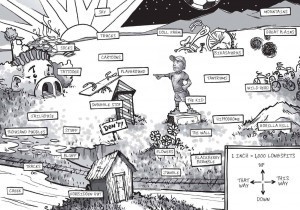 The book is not without its occasional flaw, of course. I was a little disappointed to discover that there would be a map included in this book. To me, a map nails down Hokey Pokey too much. It’s better if it’s vague and shifting and the kind of place you picture in your head. But as someone pointed out to me, the advantage of the map is to establish from the get go that Hokey Pokey is not a neighborhood down the street from you. It’s a fantastical place and you’d better be on board with that from page one onward or you are gonna be lost, sucker. So map it is. The book also sort of drops the whole Destroyer subplot, to a certain extent. In the story, Destroyer is younger than Jack and gets his jollies from ruining the happiness of small children. As far as I can ascertain, Destroyer is in this book solely to show the motivations of bullies and how you can defeat them in your own mind. It’s Jack’s counsel to Jubilee’s little brother Albert regarding Destroyer that’s the focus. What that doesn’t take into account, however, is the fact that we were in Destroyer’s head for a very long time. Suddenly we’re booted out, meant to both loathe and pity him, but we’re never allowed back into his head again. For Destroyer there is no happy ending. You get the distinct feeling he cannot wait to get out of Hokey Pokey and when he does (and if he still has no friends) it could be a very bad situation.
The book is not without its occasional flaw, of course. I was a little disappointed to discover that there would be a map included in this book. To me, a map nails down Hokey Pokey too much. It’s better if it’s vague and shifting and the kind of place you picture in your head. But as someone pointed out to me, the advantage of the map is to establish from the get go that Hokey Pokey is not a neighborhood down the street from you. It’s a fantastical place and you’d better be on board with that from page one onward or you are gonna be lost, sucker. So map it is. The book also sort of drops the whole Destroyer subplot, to a certain extent. In the story, Destroyer is younger than Jack and gets his jollies from ruining the happiness of small children. As far as I can ascertain, Destroyer is in this book solely to show the motivations of bullies and how you can defeat them in your own mind. It’s Jack’s counsel to Jubilee’s little brother Albert regarding Destroyer that’s the focus. What that doesn’t take into account, however, is the fact that we were in Destroyer’s head for a very long time. Suddenly we’re booted out, meant to both loathe and pity him, but we’re never allowed back into his head again. For Destroyer there is no happy ending. You get the distinct feeling he cannot wait to get out of Hokey Pokey and when he does (and if he still has no friends) it could be a very bad situation.
So what the heck will kids get out of this book? Well, the reading will be interesting to watch. A certain strain of child reader will begin to question the world’s internal logic from the get go (i.e. what do the kids eat besides hokey pokeys, how do kids of different ages know that they’re siblings, where do newbies come from, etc.). One might point out that Maniac Magee (again) had ITs own internal logic so this is hardly new territory for Spinelli. Other kid readers will be hugely frustrated by something that doesn’t slot into standard fantasy. Still others will take it at face value and begin to imagine that they’re there. Those are the lucky ones.
There’s also a bit of a debate as to whether or not kids can have this book read aloud to them. I am of the opinion that while it might be chancy if you tried to do it in a group setting, one-on-one would be a better way to go. You have to realize that Spinelli begins this book with a crazy opening worthy of James Joyce (indeed I’ve already heard this book referred to as “the children’s Ulysses“). It’s not impenetrable, just unexpected. We’re all so used to the same kinds of books beginning the same kinds of ways that when we encounter something as unique as a one-page run-on sentence involving Orion and Mooncow and the fall of a lavender star, we’re unprepared. Those kids who read it on their own or read it with a parent and have someone to discuss it with, they might get a lot out of this one. You’ll have to booktalk it so that they get past that first page, but once they’re in, they’ll be in. Hopefully.
“Sometimes the story knows more than the writer.” Madeleine L’Engle said that. I think what she meant was that the reader is going to get something out of a story that might have completely slipped by the writer. And few books for children are as prone to this as Jerry Spinelli’s Hokey Pokey, a book that dares to recast childhood from a time to a place. In interviews Spinelli has said that the main character of this book is childhood itself. It may be divisive, but there’s no denying the writing. Let’s just say this much: Your kids have never read ANYTHING quite like it before. I happen to think that’s a good thing. Try it then.
On shelves now.
Source: Galley copy sent from publisher for review.
Like This? Then Try:
Doll Bones by Holly Black
Dandelion Wine by Ray Bradbury
Criss Cross by Lynne Rae Perkins
Notes on the Cover: Honestly, it’s still too representational for me. See, here was the original:
I could see what they were going for, but since it didn’t make the final cut I can’t say I’m surprised that it was ultimately rejected. This final one is nice and all but a bit too dreamy. Dunno. Can’t say what I really wanted it to be, but not quite that either. We’ll have to see what the paperback comes up with.
Other Blog Reviews:
Educating Alice
Confessions of a Bibliovore
Killin’ Time Reading
BooksnStories
Professional Reviews:
A star from Kirkus
Publishers Weekly
The Wall Street Journal
The Examiner
Interviews:
NPR
TIME for Kids
The Buffalo News
January 12, 2013
Video Sunday: Steampunk rodentia
Now this is really neat. There’s a series called BOOKD through THINKR (apparently E’s are considered gauche these days) that will take a topic and really go into it with a panel of experts. In this particular case the question is whether or not you should re-read Charlotte’s Web. Author Bruce Coville and teacher/blogger/author Monica Edinger (amongst others) give their two cents. Really nicely edited and shot, don’t you think?
In other news, I had no idea that the Royal Shakespeare Company had created a staged adaptation of The Mouse and His Child by Russell Hoban. Hoban died just last year in 2012. I feel a bit miffed that he didn’t get to see this. Maybe he got a sneaky peak in some way. At any rate, it look fantastic (love the ending on the second video). I just wonder how they pulled off The Caws of Art. I’ve two videos here for the same production. Love them both for very different reasons.
Thanks to Stefan for the links!
Sometimes I like to step into an alternate universe where I grew up in the USSR and watched television like this version of The Hobbit. Instead I grew up on the old Rankin & Bass version. Which was better? Um . . .
Thanks to Educating Alice for the link!
And kudos to The New York Times for this lovely Christoph Neimann illustrated video of an interview Sendak conducted with NPR.
When I die, let’s do that. That would be fun. Make a note of it.
And finally, for the off-topic part, gold gold goldy gold. I don’t even know if you could label it “Off-Topic” since it involves a child reading. Or rather, a three-year-old child “reading”. I know it’s three minutes but I seriously sat down and watched the whole thing because it’s a fascinating case study in what words kids pick up on when they hear stories. The “but then” particularly amuses.
Many thanks to Stephany Aulenback for sharing that.
January 9, 2013
Fusenews: “…there are two paths you can go by, but in the long run / There’s still time to change the road you’re on.”
The last few days have been a blur, helped not a bit by a toddler who suddenly took it into her head that 4:45 a.m. is a perfectly reasonable time to wake up and that perfectly reasonable people should be up and about and WHY ISN’T MOMMY BEING PERFECTLY REASONABLE ABOUT THIS???? … WAAAAAAUUUUGGGGHHHH! So if I misspell things or make factual errors along the lines of “tigers have opposable thumbs” grant me a modicum of pity/slack.
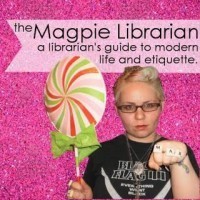 Let’s start off with a larf. And by “larf” I mean “a fact so ludicrous that you may find yourself weeping helplessly while fighting off the insane desire to giggle like a maniac”. Such is my own personal reaction to hearing that CNBC said that the job of librarian was one of the “least stressful” in 2013. I could respond (beyond just cackling/crying) but I’ll leave it to Miss Ingrid at The Magpie Librarian who may well be my new personal hero. Anyone who says she freebases sequins is automatically good people. Thanks to Sandy Soderberg for the link!
Let’s start off with a larf. And by “larf” I mean “a fact so ludicrous that you may find yourself weeping helplessly while fighting off the insane desire to giggle like a maniac”. Such is my own personal reaction to hearing that CNBC said that the job of librarian was one of the “least stressful” in 2013. I could respond (beyond just cackling/crying) but I’ll leave it to Miss Ingrid at The Magpie Librarian who may well be my new personal hero. Anyone who says she freebases sequins is automatically good people. Thanks to Sandy Soderberg for the link!Me Stuff now. This past Saturday I was pleased as punch to host the Children’s Literary Salon on “Nonfiction Ethics in Books for Kids” with the NF luminaries Meghan McCarthy, Deborah Heiligman, Sue Macy, and Susan Kuklin. The event was a smash success, but alas it was not recorded for posterity. The next best thing then would be to read the accounts of it available on the interwebs. There was this article in SLJ Getting It Right, Making It Fun: NYPL Panelists Talk Writing Nonfiction. Roger Sutton offered his opinion over at Read Roger. And very soon Susan Kuklin will write up a piece on the talk at Interesting Nonfiction for Kids (or I.N.K.), though I’m not sure when it’ll be live, though.
In other news, Kyra Hicks has taken one for the team and updated her regular series on the Coretta Scott King Awards. Now looking at the winners between 1970-2012 we can get a sense not only of decade-long trends, but also contenders for this year’s awards. If you’ve ever thought to yourself that there were enough African-Americans working in the field, check out those numbers and think again.
There’s a blog contest on the winds . . . a blog contest involving a signed Mo Willems poster of such unbearable awesomeness and beauty that I’ve half a mind not to tell any of you jokers and just enter it entirely on my own. MWAH-HA-HA-HA! But then that darned angel on my right shoulder tells me that it wouldn’t be right, and the devil on my left shoulder just shrugs, puts out her cigarette on my collarbone, grumbling that there isn’t any space on the walls of my New York apartment anyway. But YOU happy folks have a chance. It’s a contest run by the Eric Carle Museum and involves THIS poster:
Oh, and while you’re at it, the Carle celebrating its 10th anniversary with a kickin’ Charlotte’s Web exhibition. Feel a yearning to see what that would look like? Do the next best thing and read this review of the show. Then, like me, plot to figure out how the heck you’re going to move to Amherst. Librarians jobs ain’t plentiful but at this point I’d do ANYTHING to get out there . . .
Speaking of Horn Book (which is to say, at some point in the course of this post I mentioned Roger Sutton) did you hear about K.T. Horning’s epic job? HB Executive Editor Martha V. Parravano wrote that to celebrate the 75 anniversary of the Caldecott Medal, KT will, “examine one winning book per decade [of the Caldecott Medal], focusing each time on a book that spotlights the developing identity of the American picture book. K.T.’s inaugural column appears in this issue, beginning with the 1930s and Thomas Handforth’s now nearly forgotten Mei Li. In print, Horning focuses on how Mei Li helped the nascent children’s book field answer the question ‘What is a picture book?‘ Online [writes Martha], you will find her fascinating research into the background of author-illustrator Handforth, the China he discovered on his world travels, and the real little girl who became the inspiration for the character Mei Li…”
Daily Image:
Stairway to heaven?
Next best thing, I think. Thanks to Aunt Judy for the link!
January 8, 2013
Press Release Fun: NEH Seeks Nonfiction Nominations
WASHINGTON (January 2, 2013) – The National Endowment for the Humanities (NEH) seeks nominations for a new nonfiction booklist for elementary, middle, and high-school aged children.
Aimed at young readers who want to delve more deeply into areas such as history, biography, archaeology, or philosophy, this new list will supplement NEH’s popular summer reading list, which, since its inception in 1988, has been heavily weighted towards works of fiction. NEH’s new nonfiction list will reflect the new Common Core State Standards, which place a greater emphasis on nonfiction material, and will serve as a resource for teachers and parents of children who want to read about the tragic Irish potato famine of the 1840s and 50s or the infamous Salem witch trials in addition to—or instead of—Harry Potter and The Lion, The Witch and the Wardrobe.
NEH seeks your assistance in building its first nonfiction Summertime Reading List. We invite you to nominate outstanding nonfiction books for any or all of the following three age groups: 5-8 years old; 9-13 years old; and 14-17 years old, and tell NEH why your selections should be recommended for a new generation of readers.
Nominations may be made online at: http://www.neh.gov/non-fiction-book-form. Recommended titles should have a strong humanities content, be of lasting value to readers, and readily available in print. Final selection of the books will be made by an advisory board composed of educators, library and information science specialists, historians, scholars of literature, and experts in childhood literacy, and will be announced in 2013.
January 6, 2013
Review of the Day: Unicorn Thinks He’s Pretty Great by Bob Shea
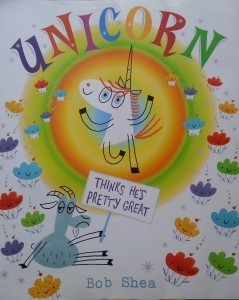 Unicorn Thinks He’s Pretty Great
Unicorn Thinks He’s Pretty Great
By Bob Shea
Hyperion Books
$15.99
ISBN: 978-1423159520
Ages 4-8
On shelves May 28th
I feel like it’s only recently that pop culture has opened its eyes and realized that when it comes to mythical creatures, unicorns are the funniest animals. Sasquatches rank a close second and zombies have their laughs, but for out-and-out humor, unicorns beat all (there’s a reason the “Charlie the Unicorn” vid was one of the first viral videos on YouTube). I say that and yet there hasn’t been a single funny unicorn picture book out there that I could name off the top of my head. I say there hasn’t been one . . . until now. And who else would have had the sweet twisted sense to come up with the world’s greatest unicorn-related picture book other than Bob Shea? If you thrilled to his Dinosaur Vs. Bedtime and were wowed by his New Socks then hold on to your hats folks. The man has just outdone himself and the result is the funniest picture book I have read in years and years and years. Unicorn Thinks He’s Pretty Great all right. And so will you.
Poor Goat. He’s feeling pretty downtrodden at the moment. You would too if you had to compete with someone like a Unicorn for attention. When Goat rides his bike to school no one notices him thanks to flying Unicorn. When he brings marshmallow squares (“that almost came out right”), Unicorn makes it rain cupcakes. When he tries to do a magic trick, unicorn turns stuff into gold. “I can’t follow that!” Goat’s content to mull over the situation alone, until Unicorn comes on by. First Unicorn cannot get enough out of Goat’s goat cheese pizza (unicorns can’t make cheese). Then he gets wowed by Goat’s hooves (they’re cloven). And then he starts wondering what it would be like to do stuff like play soccer without destroying the ball. When all is said and done, it may well be that Goat and Unicorn have a lot in common with one another. Maybe they’ll be friends after all.
Why should you pick this book up? I direct your attention at this time to the cover. There you will notice that the title “Unicorn” is written with sparkles and letters that are every color of the rainbow. Unicorn, for his part, is making it rain cupcakes from his hooves. Smiling cupcakes. On the back cover Unicorn is reading this book as a flock of yellow and green birds tweet their undying love to him. The title page shows a cloud raining on goat and everything else, except for smiling unicorn (a small heart coming from the cloud in adoration). On the dedication page the goat sits morosely covered in flowers that clearly erupted over his personage when Unicorn skipped past. And if all that weren’t enough, please note that when you look at the endpapers at the back of the book and you see, yet again, the unceasing row of smiling cupcakes, notice that one of them has been replaced by a partially devoured slice of goat cheese pizza. All of these details, every last one, exist around the story itself. If you can imagine how much time the author/illustrator has devoted to just these little bits and pieces, you can understand how much MORE time and love went into the actual book itself.
And yes, the art is magnificent inside as well. I mean, the fact that the unicorn is blue-eyed with red hair . . . I have no idea why that should be funny, but it is. He has this bizarre wide-eyed innocence about him. There’s also the fact that every time he enters a room he is surrounded by a universe in love with him. The shot of him approaching goat while behind him the mountains, lakes, forests, earthworms, and planes all give off little hearts of love is worth the price of admission alone. There’s actually a kind of Japanese animated sensibility to this. Shea is tapping into his inner kawaii to make a book that references the art without being direct. Note too that when Goat starts fantasizing about what awesome crime fighters the two could be, Shea subtly changes his style to become a little more old-fashioned and classic. It doesn’t jar the reader out of the book, but it does make a slight and subtle distinction to young readers that this storyline is just in Goat’s head. Remarkable!
And that’s all great. What surprised me was how amazing the writing was. First off, part of the reason the book works at all is that Shea figured out Goat’s personality from the get-go. He’s a little too eager to try and make himself look good. You know that he would kill to get the sort of attention unicorn attracts naturally. But the funny thing is that for all that we’re on to Goat from the start, we’re also on his side. Who amongst us would, in his place, feel anything but envy towards Unicorn? That’s why it works so well when Unicorn turns the tables, so to speak, and keeps oohing and aahing over Goat’s finer attributes. By the end of the story you know that Goat’s kind of a shyster and Unicorn is pretty nice, but you still feel really great over the fact that they’ve become friends.
The language of the text puts it over the top as far as I’m concerned. When Unicorn notices Goat’s feet he proclaims, “Whoa! What is up with your hooves? Those things are out of control!” Goat replies, “Oh, these? These bad boys are ‘cloven’.” Do you know how many writers of children’s books would kill to come up with picture book dialogue like this? The title alone is key to the rest of the text. It’s a contemporary look, a contemporary feel, and the language is straight out of the early 21st century. I wouldn’t have it any other way. No sir.
About the point I start hyperventilating over the fact that even the fonts in this book are fantastic (Goat speaks in a typewriter like font while Unicorn will occasionally burst out with multicolored words surrounded with sparkles) I know I have to reign myself in. So here’s the part where I mention in the review that no matter how awesome the book I’ve read is, there are still parts that need improvement.
*crickets chirp*
Honest, I did try to come up with something. But this is one of the rare books where I cannot for the life of me figure out how anything in the title could be better. It’s about a friggin’ unicorn who eats glitter and rainbows and I think it’s jim dandy. Best danged thing I’ve encountered in a long time. You know what this book really is? It’s a unicorn book that boys will actually want to read. And personally I think that’s exciting news that should be celebrated far and wide. So if you’re looking for a funny picture book that would make a killer readaloud to kids in anywhere from Kindergarten to the 3rd Grade, pluck this puppy up and keep it by your side.
On shelves May 28th
Source: Galley sent from publisher for review.
Like This? Then Try:
The Great Lollipop Caper by Dan Krall
Big Red Lollipop by Rukhsana Kahn
Trouble in the Barkers’ Class by Tomie de Paola
Interviews:
Bob Shea mentions his work on this book over at Literary Friendships.
Videos:
Not entirely related but it does involve Bob Shea and a unicorn. Coincidence? I think not!




